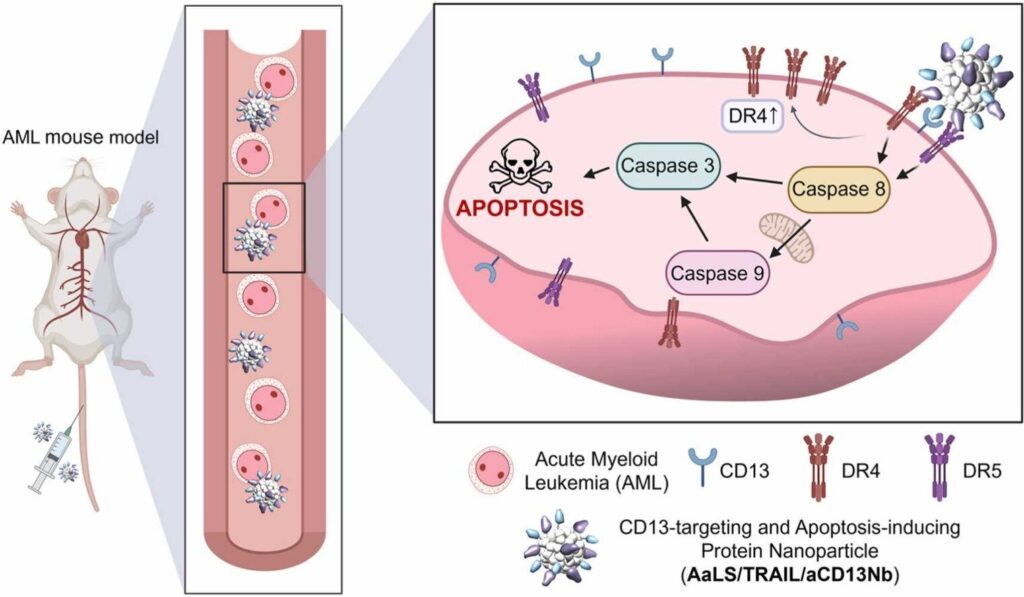A research team, affiliated with UNIST has developed nanoparticles that effectively treat acute myeloid leukemia (AML), offering the potential to reduce side effects while enhancing therapeutic efficacy by selectively targeting and eliminating leukemia cells.
Jointly led by Professors Sebyung Kang, Eunhee Kim, and Sung Ho Park from the Department of Biological Sciences at UNIST, the research team created an AML-specific, apoptotic cell death-inducing protein nanoparticle, designated AaLS/TRAIL/aCD13Nb. In animal experiments, these nanoparticles demonstrated the ability to inhibit leukemia cell growth and significantly improve the survival rate of mice.
The work is published in the journal Nano Today.
Acute myeloid leukemia is a life-threatening blood cancer with a mortality rate of 90% without prompt intervention. Current chemotherapy treatments often result in severe side effects, making them particularly challenging for elderly patients, highlighting the urgent need for new therapeutic options.
The research team focused on CD13, a protein expressed on the surface of leukemia cells. They engineered a CD13-binding nanobody (aCD13Nb) that strongly interacts with CD13, in addition to attaching Tumor Necrosis Factor-Related Apoptosis-Inducing Ligand (TRAIL), a protein known to induce cancer cell death, to the surface of an Aquifex aeolicus lumazine synthase (AaLS) protein nanoparticle. This combination rapidly induces apoptosis in leukemia cells while sparing healthy cells.

The developed nanoparticles selectively adhered to and eliminated leukemia cells. In animal studies, mice treated with these nanoparticles exhibited a significant reduction in leukemia growth and an approximately twofold increase in survival rate compared to the control group.
Professor Kang stated, “This technology, which selectively targets and removes cancer cells, has the potential to reduce side effects associated with treatment. It represents a significant advancement in the management of leukemia.”
First author Hejin Jun added, “This study establishes a foundation for developing safe, targeted therapies for acute myeloid leukemia.”


